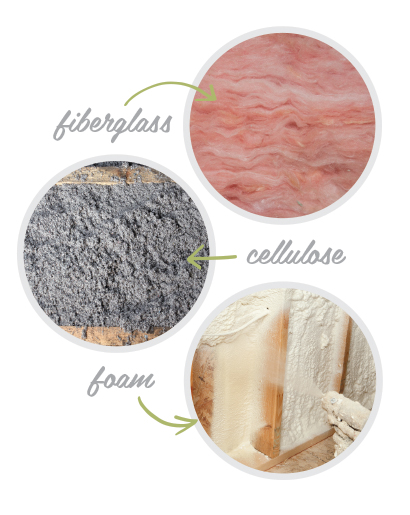
By Nick Geswein
One of the best investments you can make for your home is insulation. To choose the best insulation you must consider location and if the comfort and energy savings outweigh the cost.
Heat is ‘on the move’
You may not realize it, but the heat in your home is always moving. By insulating our homes, we can stop that movement or reduce it. That heat movement — or heat transfer — occurs in three ways: through conduction, convection or radiation. Here’s what those three terms mean:
Conduction: That’s when heat moves from one solid to another cooler solid when they’re touching either. An example: your cold hands are warmed up when you’re holding a cup of hot cocoa. Conduction is measured in R-value. R-value determines how well the material is blocking the heat. A high R-value means the resistance is greater; in other words, that the insulation is very effective.
Convection: Heat is transfered through the air. Have you heard the expression “Hot air rises and cool air falls to take its place”? That’s a simple way to describe convection. When air is leaked in and out of a home, it’s due to convection. Proper insulation can help reduce heat transfer caused by convection.
Radiation: Radiant heat passes through the air and heats solid objects. This is what happens when you place your cold hands near a warm fire or when you feel the sun’s heat outside in the summer.
Now that you know how heat moves, you can choose the best insulation for your home.
Fiberglass insulation
Fiberglass insulation is made from strands of glass. That content — and the fact that this type of insulation is not compact — makes for a great heat deterrent. However, since it is not compacted, air may flow through it more easily. So, steer away from fiberglass insulation if you’re dealing with convective heat loss or heat gain.
Fiberglass insulation comes in premade batts precut to fit wall or joist cavities. It can also be blown in loose, allowing for a more custom install with less opportunities for gaps.
Cellulose insulation
Cellulose insulation is made up of finely cut-up newspaper. It is blown or sprayed into wall cavities or attics. If you want to reduce conductive heat flow, cellulose may be your insulation of choice. Over time, though, this type of insulation settles and may lose some of its conductive properties, resulting in lower R-value. But since it is denser than fiberglass, even as it settles it will not allow as much air to flow through it.
Because cellulose is loose and is not a good air barrier, it does not address convection heat transfers.
Foam insulation
Foam insulation can be sprayed on or installed in sheets. The tiny plastic bubbles —known as “cells” — which are part of this insulation slow down heat transfer due to conduction. That’s because it takes longer for heat to travel through each bubble. And, if the foam is applied thick enough, it becomes an air barrier strong enough to reduce convective heat loss or gain.
There are two main types of “cells” in foam insulation: opened and closed.
Opened cell foam is softer, lighter and not very dense. In addition to providing R-value, it acts like a house wrap. It provides an air barrier. However, it doesn’t provide a moisture barrier.
Closed cell foam is harder, heavier and denser. It has a higher R-value per inch. Use it when you need R-value, an air barrier, a vapor barrier and/or have a limited space to try and fit higher R-values into.
An energy audit may help to identify the characteristics of heat transfer in your home. For more information, visit www.energy.gov/energysaver/weatherize/insulation.
NICK GESWEIN is the energy advisor at Harrison REMC in Corydon, Indiana.



